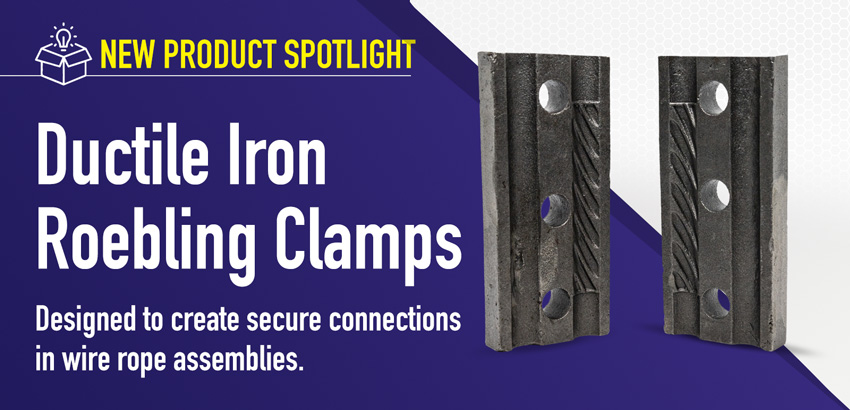Roebling clamps, also known as wire rope clamps, are essential devices used to secure the loop end of a wire rope. These clamps are pivotal in establishing reliable connections in wire rope assemblies, guaranteeing that loops or ends remain anchored.
The Roebling Clamps have spiral ridges on one side of the groove to prevent slipping. When correctly used, these clamps enable two parallel ropes to distribute the load during shortening or tensioning tasks.
They are compatible with either 1/2” or 5/8” diameter ropes. By tightening the provided bolts to 50 ft. lbs., each rope can safely handle up to 600 lbs. of load.
Key Components and Installation
Components
A standard Roebling clamp comprises three main components:
1. Clamps
2. Fasteners
To assemble, the wire rope is positioned between the clamps. The nuts are subsequently tightened onto the threaded ends of the clamp.
Installation Process
1. Begin by wrapping the Clamps around the the wire rope.
2. Position the clamps over the wires
3. Thread and tighten the nuts onto the clamp, securing the dead end of the rope to the load-bearing portion.
Applications
Roebling clamps are indispensable in various scenarios where wire ropes play a role, including:
– Construction and industrial machinery and rigging.
– Marine tasks such as moorings and towing.
– Suspension systems in bridges.
– Any setting necessitating a secured loop or wire rope termination.
These clamps are predominantly crafted from ductile iron casting due to its inherent strength and durability.
Ductile Iron Explained
Ductile iron, alternatively termed nodular cast iron or spheroidal graphite iron, is renowned for its superior strength, shock-resistance, and stress tolerance. Distinct from the brittle nature of traditional gray cast iron with its graphite flakes, ductile iron boasts a nodular graphite structure, endowing it with remarkable ductility.
Casting Process Overview
Casting is a technique where liquid material solidifies within a mold, resulting in a product. Here’s a snapshot of the ductile iron casting process:
Melting
Iron, along with specific additives like magnesium, is melted to foster the nodular graphite formation.
Mold Preparation
The desired product shape is crafted, commonly using sand molds for iron castings.
Pouring
The liquefied ductile iron is delicately poured into the mold.
Cooling
Post-pouring, the iron starts solidifying, forming its distinct nodular graphite structure.
Removal and Finishing
Once solid, the casting is extracted and may undergo various refinements to meet the desired specifications.
For Roebling clamps, the ductile iron casting technique offers an optimal blend of strength and malleability. This ensures the clamps can firmly secure wire ropes while enduring the inherent stresses of typical uses.
As a leading global distributor, we guarantee top-quality products tailored for diverse industries. Trust in our commitment to reliability. Contact us today for a FREE Quote on cast iron parts.

Resourceful and innovative Marketing Pro, with 20+ years of progressive experience in the marketing and creative technology industry. Responsible for digital and traditional marketing efforts that promotes brand awareness, increases engagement, and drives revenue.


















